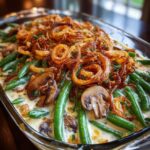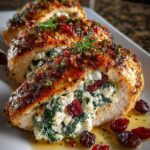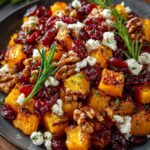Blue Raspberry: The Flavor, the Myth, and Its Cultural Impact
Blue raspberry is a flavor that has become iconic and widely recognized. From slushies and candies to vaping liquids, its bright color and sweet-tangy taste have captivated people for decades. But despite its popularity, blue raspberry has long sparked curiosity. Is there a real blue raspberry fruit? Why is it blue, and how did it come to dominate the flavor landscape? This comprehensive article dives into the origin, history, uses, and health considerations of this unique taste, exploring everything from its rise in the 1970s to its future in modern food and beverages.
What is Blue Raspberry?
This artificial flavor is often associated with brightly colored candies, frozen drinks, and snacks. Despite its familiar taste, it has no natural counterpart in the real world. The flavor is modeled after the tartness of raspberries but is amplified with sweet and sour notes. The blue color was chosen to differentiate it from other fruity flavors that were red or pink, such as cherry and strawberry.
While there is no fruit that looks or tastes like blue raspberry, the flavor has become a staple in the food industry. The electric blue color, often achieved with the food dye Blue No. 1 (Brilliant Blue FCF), adds to its appeal, particularly in children’s products.
The Origin of the Blue Raspberry Flavor
The flavor was created in the 1970s by candy manufacturers to address a unique problem: too many red-colored flavors. Red was a popular color for fruity candies, representing flavors like cherry, strawberry, and raspberry. To stand out, food makers developed the blue version as a distinct alternative. Its initial use in slushies and frozen treats helped it gain popularity, and over the years, it expanded into various other products.
For more details on other unique food innovations, visit The Ultimate Guide to Making Crispy Chicken Fritta at Home.
The History of Blue Raspberry Flavor
A 1970s Innovation
In the early 1970s, ICEE and Slush Puppie were two frozen beverage brands that needed a way to differentiate their raspberry-flavored drinks from other red flavors already available. They turned to blue raspberry, and it became an instant hit. The blue color helped the flavor stand out from other red-based fruity beverages, and its tart and tangy profile was well-received by consumers.
Candy manufacturers soon took notice of the success of this flavor in frozen drinks. Companies like Jolly Rancher and Airheads introduced blue raspberry candies to their product lines, and it quickly became a cornerstone in the candy world.
Expansion into Other Products
After its success in frozen treats and candies, this flavor began appearing in other products like sour gummies, hard candies, and lollipops. The intense flavor and vibrant color made it a favorite among children, and the trend soon spread to other areas of the food industry, including beverages like sports drinks and even energy drinks.
Why Is Blue Raspberry Blue?
The Science Behind the Blue Color
The bright blue color associated with this flavor is not natural but rather the result of artificial coloring. Blue No. 1 (Brilliant Blue FCF) is the food dye most commonly used to achieve the vibrant hue. This dye is approved for use in many countries, including the United States and those in the European Union.
The decision to make it a blue color was primarily visual. Red was already a crowded space for flavors like cherry, strawberry, and raspberry, so food manufacturers needed a distinct color to make this flavor stand out. This decision was purely marketing-driven, and it worked. Today, this taste is easily recognizable and synonymous with fun, sugary treats.
Whitebark Raspberry: The Closest Fruit
There is no true blue raspberry fruit, but the flavor is loosely inspired by the whitebark raspberry (Rubus leucodermis), which has a blue-black hue. While not blue in the vibrant way the flavor is portrayed, this species of raspberry has a tartness that provided the base inspiration for the artificial flavor we know today.
Popular Products Featuring Blue Raspberry
The appeal of this flavor stretches far beyond slushies and candy. Here’s a look at some of the most popular products that use it:
1. Slushies and Frozen Drinks
Perhaps the most iconic use of blue raspberry is in slushies and frozen beverages. Brands like ICEE and Slush Puppie made this flavor a staple in their frozen drinks, and its bright blue color and tangy taste make it a perfect refreshment for hot summer days.
- Fun Fact: Slushies with blue raspberry flavor are often paired with cherry or cola flavors for a multi-flavored experience, creating a visually striking frozen drink.
2. Blue Raspberry Candies
Blue raspberry is a top flavor in the world of candies, showing up in products like:
- Jolly Rancher hard candies
- Airheads
- Sour Patch Kids
- Ring Pops
- Push Pops
The tangy, sweet taste appeals to both kids and adults alike, making it one of the most requested flavors in candy lines.
3. Sports Drinks
In recent years, this flavor has made its way into sports drinks like Gatorade and Powerade. These beverages offer hydration with a burst of flavor that is both refreshing and invigorating. The bright blue color also makes them a popular choice for athletes and active individuals.
4. E-Liquids and Vaping
The vaping industry has also embraced this flavor as a key profile in e-liquids. Its intense, tart-sweet profile makes it a popular choice among vapers who prefer fruity flavors. Companies that produce e-liquids have expanded the flavor into various blends, often combining it with other fruits like lemon or strawberry.
For more flavor exploration in the food industry, check out What Makes Fried Chicken Not Crispy?.
Is Blue Raspberry a Real Fruit?
The Myth
Despite its popularity, blue raspberry is not a real fruit. While the artificial flavor was inspired by the tartness of raspberries, there is no actual blue raspbberry that grows in nature. The decision to make the flavor blue was purely based on marketing, as it helped distinguish it from the crowded red flavor space.
Natural Alternatives
There are some natural fruits that are bluish in color, such as blueberries or blackberries, but none have the same flavor profile as blue raspberry. That said, some companies are exploring ways to create natural flavors and colors that mimic this experience without relying on artificial dyes and flavorings.
Health Considerations
While blue raspberry products are fun and flavorful, they do come with certain health considerations.
1. Nutritional Content
Most blue raspberry-flavored products, especially candies and drinks, are high in sugar, artificial flavoring, and colorants. Consuming these products in moderation is important, as excessive sugar intake can lead to weight gain, tooth decay, and an increased risk of diabetes.
2. Artificial Food Colorings
The bright blue color of that products comes from the artificial dye Blue No. 1 (Brilliant Blue FCF). While this dye is considered safe for consumption, some studies have suggested a potential link between artificial food dyes and hyperactivity in children, though the research is not conclusive.
3. Allergic Reactions and Sensitivities
Some individuals may experience allergic reactions or sensitivities to artificial colors and flavorings. Common symptoms include hives, swelling, and digestive issues. It’s important to check the ingredient list if you or your child is sensitive to certain additives.
For more on food additives and health, visit How to Fix Soggy Fried Chicken.
Frequently Asked Questions
1. What Does Blue Raspberry Taste Like?
It has a sweet, tangy, and slightly sour taste that is stronger than natural raspberry. Its flavor is often described as a combination of tartness and sweetness, making it perfect for candies and drinks.
2. Why Is Blue Raspberry So Popular in Slushies?
The vibrant blue color stands out in frozen beverages, and its tangy flavor is refreshing and thirst-quenching, making it a go-to choice for slushies and frozen drinks.
3. Is Blue Raspberry a Natural Flavor?
No, this flavor is artificial and created to replicate the taste of raspberries. It was developed in the 1970s as a way to differentiate raspberry from other red flavors.
4. What Is the Blue Dye Used in Blue Raspberry Products?
Blue raspberry products typically use Blue No. 1 (Brilliant Blue FCF), a synthetic food dye approved for use in many countries.
5. Are There Natural Alternatives to Blue Raspberry Flavor?
Some companies are working on creating natural alternatives to this flavor using plant-based ingredients for both flavoring and coloring.
The Future of Blue Raspberry
Continued Innovation in Blue Raspberry Products
This artificial flavor continues to be popular in candies, drinks, and even novelty snacks. As more brands look for innovative ways to stand out in the crowded food and beverage market, the vibrant color and bold flavor will likely remain a top choice.
Health-Conscious Products
As consumer preferences shift towards healthier options, some companies are experimenting with sugar-free and natural alternatives to traditional blue raspberry products. This includes using natural dyes and sweeteners to appeal to those looking for cleaner ingredient lists without sacrificing flavor.
Emerging Trends
It’s also making its way into niche markets such as flavored waters, sports drinks, and even protein powders. The versatility of this flavor allows it to adapt to various products, and its appeal spans generations.
Internal Linking Opportunities:
- The Ultimate Guide to Making Crispy Chicken Fritta at Home: Linked under “Origins of Blue Raspberry.”
- What Makes Fried Chicken Not Crispy?: Linked under “The Science Behind the Blue.”
- How to Fix Soggy Fried Chicken: Linked under “Health Considerations.”
I’m Billy, a classically trained culinary school graduate from The Culinary Institute of America with over 12 years in the restaurant industry and over 19 years of cooking experience.








